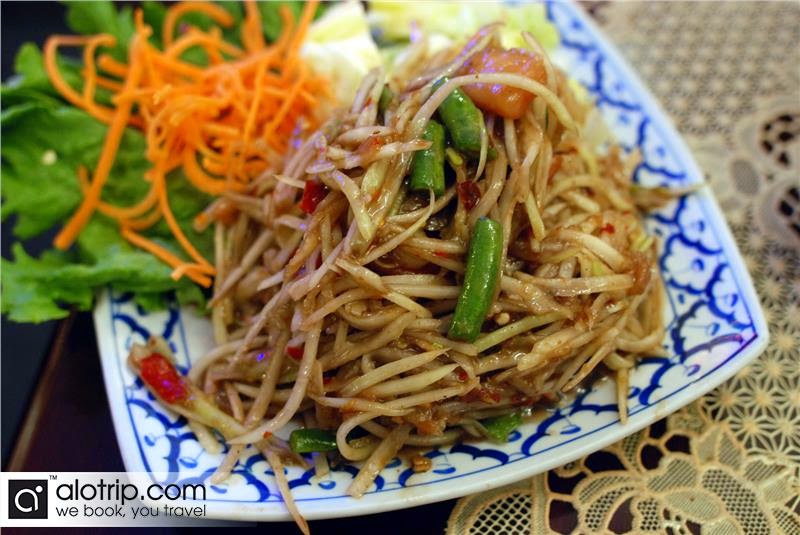Acknowledging a new trend of globetrotters –
Cultural Tourism, along with the desire of bringing unforgettable memories in Vietnam travel to tourists, we –
AloTrip, one of leading
travel websites in Vietnam (alotrip.com) hope to be a reliable companion in Vietnam trips. The following useful information about this new tendency may support you in travel plan to this beautiful country.
 |
| Festival in Sapa |
Tourists coming to and back Vietnam are not just enticed by charming Vietnam beaches and newly 5- star hotels or resorts, but also cultural attractions. One of the motivations triggering the desire of people’s traveling is to seek new horizons, have new experiences, and broaden knowledge. Apparently, tourism, since its birth, is tightly associated with culture. Yet, in each regions of Vietnam, culture is depicted differently, which arouses curiosity and stimulates discovery of travelers. Thus,
Vietnam cultural tourism was formed. In
Vietnam travel, the tourism is appealing a great number of both international and domestic tourists, especially those who adore adventuring and exploring outstanding civilizations in Vietnam and in other Asian countries.
 |
| Chirlden in Bac Ha |
The trendy
cultural tourism is categorized into nine main types. Type 1 is Sense of Place. Tourism products of this type are non-material characteristics reflected through senses about colors, sounds, light, tastes, or elements forming the national culture. These senses will create a strong emotion in tourists with unforgettable memories about
Vietnam trips. Type 2 is called Festival and Event Tours. It is a tourism product taking advantage of cultural festivals and events to set up suitable
Vietnam tours for travelers. Type 3 is entitled Cultural Heritage Tours. This product uses cultural and historical values in the heritages to serve tourists. Type 4 is Cultural Trails Tours. In each tour’s stop, there is an evidence for a wealthy or weak period of a culture. Type 5 is Modern Cultural Tours. Exploited products have both cultural and historical values of intangible and tangible works as modern world heritages, themed festivals, music events, and political, religious and sport events, etc. All of them are built up to appeal more tourists. Meanwhile, type 6 is characterized by Farm Experiences-Homestay Cultural Tours, which creates favorable conditions for tourists to experience a countryside life in Vietnam. Type 7 is Gastronomy Cultural Tours, which is based on the exploitation of traditional cuisine’s quintessence in each region. By dint of this, tourists have a chance to study and taste traditional dishes of Vietnam cuisine. Type 8 is Languages Cultural Tours. This kind of tourism is suitable for travelers who want to broaden their knowledge about Vietnamese language. Finally, type 9 is Handicraft Village Cultural Tours. All values of craft villages will be explored and introduced to tourists, which creates an opportunity to learn about traditional products.
 |
| Hue Citadel |
In Asian countries, especially in Vietnam, cultural tourism becomes prominent. With a mysterious and vivid culture, the country becomes one of world top destinations fascinating Western tourists. Historical sites, religious architectures, practiced customs and festivals, etc. come into being as tourism products. Such famous cultural tourist centers in Vietnam as Hanoi, Hue, and Hoi An… are always named in tourism promulgations. When exposing to another culture, tourists are not just immersed in, but also can discover colorful and unique traditional customs. That is why foreign tourists are interested in “bird’s cages” along Nha Trang beaches, avidly come to mountainous areas like Sapa and Mai Chau to experience on overnight homestay, enjoy mountainous specialties, admire gentle dances of local people, or excitingly get dressed sophisticated brocade skirts and shirts in their
Vietnam holidays.
 |
| Hoi An Overview |
Each country has its own original culture which portrait unique features. Vietnam is characterized by Eastern agricultural culture. As Vietnam is at a crossroad of many cultures and thoughts, the unique identity of
Vietnam culture is continuously developed, exchanged and reconciled exotic elements and indigenous ones. According to historical process, cultural elements are crystallized in tangible values of artworks, architectures (palace, royal tombs, pagodas, temples, shrines), and archaeological monuments... These elements also found in intangible values such as languages, art, festivals, cuisine, traditional costumes, manners of communication... The values are existing throughout Vietnam and in every Vietnamese people. It explains why Vietnam possesses 1/34 of the world's culture.
 |
| Inside My Son sanctuary |
In many
Vietnam tour packages, cultural tourism activities are organized based on regional characteristics. They are the Southern Folk Festival, the Dien Bien Travel (Northwest cultural festival associated with political events), and the Central Heritage Path (folk festival in combination with tours to cultural heritages recognized by UNESCO). These festivals and events fascinate many tourists domestically and internationally. Among them, the
Hue Festival is considered the most outstanding cultural tourism activity in Vietnam. The festival is regularly held every 2 years, with the support of many countries. It is an occasion for Vietnam to introduce tourists about folk culture, especially Hue royal court music - an intangible heritage recognized by UNESCO, and Nam Giao Offering Rite. In addition, the images of
Vietnam tourism will be better in the eyes of international friends through cultural impressions. Tourists will have unforgettable moments when enjoying and soaking up the Gong cultural activities in Central Highlands, tour homestay in Mekong River Delta, or getting around Hanoi City… This will make an important contribution to the development of
tourism in Vietnam not just by wonderful and impressive landscapes and seascapes, but also time-honored cultural values.
About The Author: Nguyen Manh Dung runs
AloTrip.com . Indochina now becomes a highlight tourism destination than ever. Travelers may come across many sites online that provide tours in Indochina and find differences in the price.
AloTrip Travel however displays affordable prices with so many options to choose. Tourist can check this out on
AloTrip.com.




































